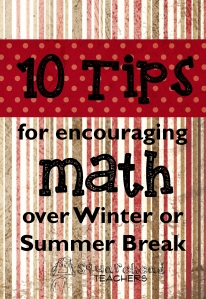
Giveaway coming later this week!
With summertime fun and sugary snacks providing so many distractions, can your children actually learn anything over the summer? Yes, they can, if you sneak in some science with fun activities like candy experiments.
Our family created candy experiments when my oldest daughter was four, and wanted to put Nerds in water. Since her first experiment, we have destroyed candy in dozens of ways and learned about chemistry, physics, and nutrition along the way. Here are a few of our favorites.
Melting: If summertime heat makes your kids complain that they’re going to melt, try melting candy to see what’s inside. If you microwave Starbursts, you’ll see shiny spots of oil that separate out from the candy. If you microwave chocolate, you might start the blooming process, in which unstable chocolate crystals start to move and separate, causing white cocoa butter “bloom” to form on the outside of the bar.
Cotton Candy Experiments: Some candy experiments use cotton candy, a summertime staple. To make cotton candy vanish, dip a puff of cotton candy in water. As capillary action carries water up the network of tiny candy strands, the water dissolves the candy from the bottom up. You can also weigh cotton candy to see how much sugar it really contains–you might be surprised to see that cotton candy is mostly air!
Find Hidden Candy: You’ll find hidden sugar in all sorts of summer snacks, from popsicles and ice cream bars to “healthy” power bars and sports drinks. To help your kids see how much “hidden candy” they’re eating, read the snack’s nutrition label to see how much sugar it contains. Then weigh candy on a kitchen scale until it matches the weight of the sugar on the label. Eating the snack would be like eating that amount of candy.
You’ll find more summer learning experiments in our book, Candy Experiments, or at www.candyexperiments.com. Enjoy summer learning!
Loralee Leavitt is the author of Candy Experiments, Road Tripping, and Candy Experiments 2 (coming in January 2015). Follow her candy adventures at www.candyexperiments.com


 Whenever we have a family gathering (like Fourth of July that’s coming up!), I like to have something for the kids to do. Whether it’s a craft, new game, something to color or an educational page worth a candy, I don’t feel prepared unless I have something planned in case they don’t find something to entertain themselves. Check out this page. It’s super simple: just color the fireworks based on if they’re even or odd.
Whenever we have a family gathering (like Fourth of July that’s coming up!), I like to have something for the kids to do. Whether it’s a craft, new game, something to color or an educational page worth a candy, I don’t feel prepared unless I have something planned in case they don’t find something to entertain themselves. Check out this page. It’s super simple: just color the fireworks based on if they’re even or odd.


 Here’s a fun list of ideas to encourage math during the Christmas or Summer Break:
Here’s a fun list of ideas to encourage math during the Christmas or Summer Break:
